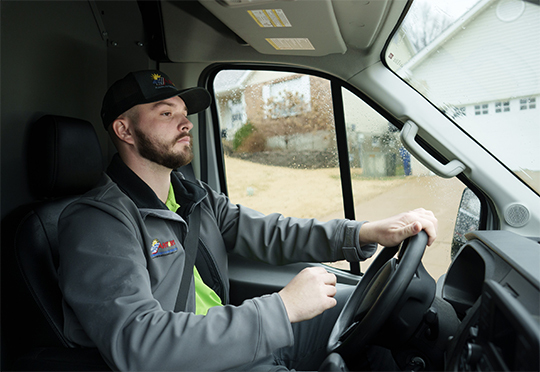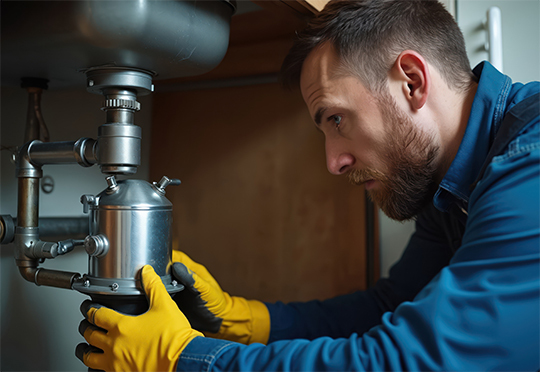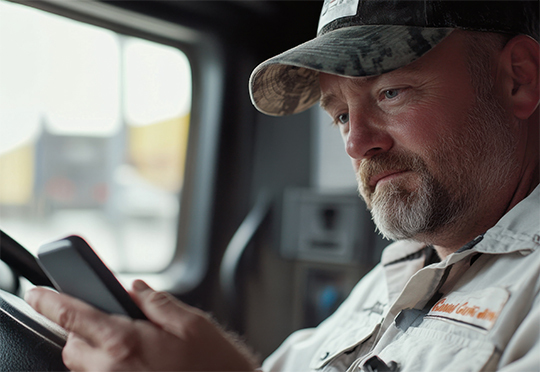
4 Ways to Coach a Safer, Stronger Fleet
Coaching your teams is an opportunity, not a punishment. But with the integration of more tools and technology, many fleet managers are struggling to convince their teams of the benefits. Many see it as one more way to micromanage their day or worse yet, something that could jeopardize their employment.
For small to mid-sized service businesses, every vehicle and every employee matters. So when risky driving behaviors start to creep in—like harsh braking, speeding, or distracted driving—the cost isn’t just financial. It impacts your people, your equipment, and your reputation. If you’re able to effectively create a safety culture through combining data and real conversations, you can demonstrate the safety benefits, cost advantages, and time savings.
Here are four ways to make safety something that motivates your team.
1. Share the data
You probably have telematics data sources to help manage your fleet’s safety, compliance, and productivity. Things like GPS tracking, vehicle maintenance reminders and scheduling, dash cams, and electronic logging devices (ELDs) are all collecting valuable information that can help you better inform your safety priorities and how to address them.
Here are some strategic ways to put that data to work when building a safety program:
- Set up a driver profile. In order to monitor each driver individually, they need their own profile. This allows you to track alerts, review trends, and keep tabs on progress (both good and bad).
- Look for behavior trends, not just isolated incidents. Start with repeated speeding, harsh braking, or aggressive acceleration.
- Use dash cam video footage for more context. Not every alert is what it seems. Take time to review select videos that could uncover more information to guide your coaching efforts. For example, a harsh braking alert can be cause for concern. But dash cam video may show this was done to prevent an accident if someone was cut off by another driver.
- Identify high-risk behavior through alert frequency or scorecards. By setting up reports, you can easily see alerts by time of day, alert type, or team member — helping to prioritize coaching sessions.
- Monitor maintenance alerts. These can help you find connections between vehicle repair issues and poor driving habits (like hard stops or excessive idling).
Once you understand the story your data is telling, you’ll be better equipped to share insights, coach with purpose, and create a safety program your team believes in.
2. Keep coaching human
The best coaching is conversational. Every team member is different—and your coaching should reflect that. Personalize each session based on an individual’s history, experience, and behavior patterns.
A great place to start is by asking open-ended questions like:
- “What do you think led to this incident?”
- “Are you feeling rushed to get your jobs completed?”
- “Do you ever feel like you're cutting corners to stay on schedule?”
- “Have you noticed any areas where you’ve improved”
These conversations build trust and help crew members feel like part of the solution, not the problem. It also makes reviewing the data easier. From there, you can set clear, achievable goals (like “reduce harsh braking by 30% over the next month”), and document everything so it can be shared and referenced.
Linxup Coaching Sessions make it easy to schedule one-on-one meetings. The Coaching Dashboard gives you a quick snapshot of driving trends, types of alerts, and even tracks progress over time. Talk through real examples with your teams, using actual footage or alerts from the dashboard.
3. Be proactive and consistent
The key to building an effective safety culture is consistency. Whether you’re running coaching sessions monthly or quarterly, keeping them on a regular schedule sets the expectation that safety is part of the job—not just something you talk about after an incident.
With Linxup, every session is documented, and notes can be shared via email, helping everyone stay aligned. Transparency builds accountability and shows your team you’re committed to their safety and success.
Plus, by using consistent coaching and reinforcement, many businesses see reductions in incidents and insurance claims which translates into lower premiums and real cost savings.
4. Make safe driving the standard
Safety shouldn’t be just one more checkbox in your day. In order to be effective, it needs to be integrated into daily operations for you and your crew. If done right, it will build trust, motivation, and shared accountability—leading to awareness, efficiency, safer practices, and cost saving. When your team sees the short- and long-term benefits safety brings for them and the company, they’re more likely to get on board.
Here are ways to create a safety culture that sticks:
- Start by listening. Use anonymous surveys or feedback sessions to identify concerns, especially around safety tools or monitoring.
- Reinforce the “why.” Make it clear that technology like dash cams and GPS tracking exist to support coaching conversations and protect them from false claims or liability.
- Customize for necessary alerts. Adjust alerts and monitoring settings based on what matters most to your business—whether that’s speeding, distracted driving, or fuel efficiency.
- Create documented processes. Establish clear expectations, procedures, and follow-ups so coaching feels consistent and focused.
- Provide outside resources. Crew members may have questions they don’t feel comfortable asking in person. Offer additional resources or even short videos they can utilize to improve skills and understand what’s expected.
- Encourage peer mentorship. Let experienced team members mentor new hires as they navigate expectations—-helping set clear expectations from the start and providing a trusted resource for any questions.
- Recognize improvement and good habits. Give credit where it’s due. Whether someone’s cut down on hard braking or just showing steady improvement, give them recognition for improving. Consider a reward program for the most improved driver or driver with the highest safety score of the month.
- Ask for feedback. A strong safety program needs to evolve over time. Let crews know you are open to hearing about their experience and allow them to ask questions or request additional coaching when they need it.
- Use the right tools and technology. Systems like Linxup make it easier to track, measure, and manage your program through the Coaching Dashboard and Coaching Sessions. You can pull daily reports, review safety scores and rankings, and document conversations so it makes it easy to keep the process transparent.
When safety becomes a shared value it creates buy-in and is more likely to be maintained.
Linxup makes coaching easy
Creating a coaching program doesn’t mean sacrificing relationships for automation. In fact, it’s the opposite. Linxup gives you the visibility and structure to support meaningful, real-world conversations with your crews so you can reduce risk, boost morale, and grow a team that’s invested in doing the right thing.
With the right data, a consistent approach, and a little human connection, you can build a fleet that’s safer, stronger, and more successful.



